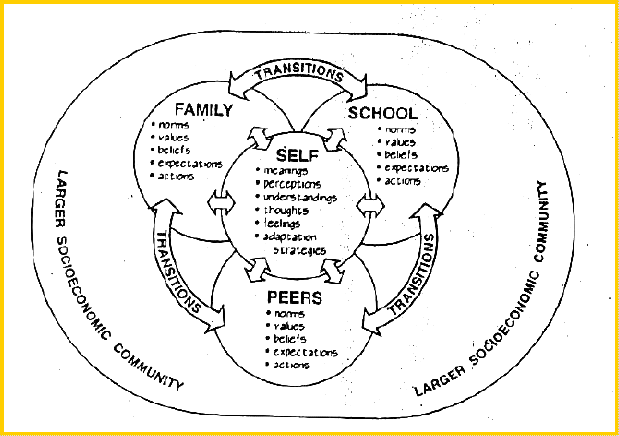
Multiple Worlds Theory (click here)
Deficit Theorists of the Past
(Cultural &Genetic)
Genetic Theorists claimed some people are less intelligent. Studies cited the poor and immigrants as those less intelligent. (Darwinian Theory)
Original Scholastic Testing proved the point that certain groups were less intelligent and justified social status and placement
Cultural Deficit Theory blamed social, cultural or economic environment (Engelmann & Bereiter)
Modern Deficit Theory: "The Bell Curve"
STATS from the Bell Curve
Richard J. Herrnstein, Ph.D. Psychology, Harvard University
Charles Murray, Ph.D. Political Science, M.I.T.
Criticism of the "Bell Curve"
It is irrational to consider the differences in IQ scores between [cultural] groups relevant... In other words, within a group everyone faces similar things (cultural teachings, traditions, and values) and so is expected to perform similarly. Between groups, there are differences in the things they face. Each group has own traditions and values.
For example, Eskimos are highly educated on differences in snow types. They consider this an essential thing in their culture and way of living. Does it mean that, because they give more importance to snow types than to solving arithmetic problems, they are not intelligent?
Each group gives different values to individual things.
It’s like comparing apples and oranges
Cultural Difference Theory (Erickson)
Micro-ethnography: micro elements that affect learning
Cultural Ecological Theory (Ogbu)
Macro-ethnography: focuses on the larger social influences which create differences. (ie. social class, immigration, historic oppression, etc…)
Autonomous Minorities: culturally distinct, but culture is not devalued in society.
Cast-like Minorities: Brought to the U.S. involuntarily, such as through slavery or colonization. May experience what is called "secondary cultural differences" from prolonged contact with a dominant culture that is different. This can create resistence.
Immigrant Minorities: Came to U.S. voluntarily and may experience less hardship or need for resistence.
What do you think?
Idea that every student exists in multiple worlds of values, norms & beliefs (peers, school, family)
Each student has a different level of negotiating or not negotiating the differences in each world
Takes a macro and micro approach
Multiple Worlds Theory (Phelan, Davidson)

Ways Students Cope with Multiple Worlds by Type
Type 1 - no cultural differences, no negotiation needed
Type 2 - some cultural differences, negotiation easy
Type 3 - major cultural differences, negotiation hard, but managed. May become bi-cultural or assimilate.
Type 4 - major differences, negotiation hard and not managed. May drop out.